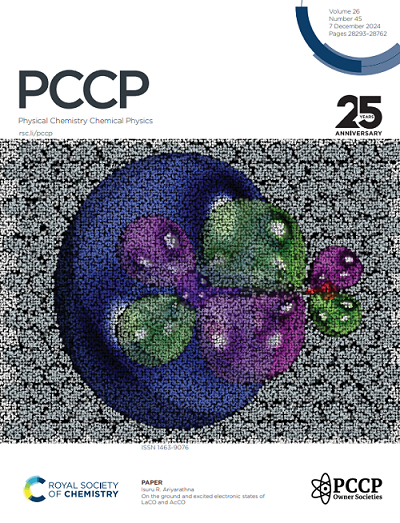锂离子电池用三聚氰胺一步退火合成碳纳米管
IF 2.9
3区 化学
Q3 CHEMISTRY, PHYSICAL
引用次数: 0
摘要
本文报道了一种简单合成碳纳米管(CNTs)的方法,并展示了其在锂离子电池中的应用。在本研究中,通过对三聚氰胺的一步退火,合成了直径约为150 nm的碳纳米管和定义良好的石墨晶格。所制备的复合负极具有优异的电化学循环性能。本文章由计算机程序翻译,如有差异,请以英文原文为准。

One-step annealing synthesis of carbon nanotubes from melamine for lithium-ion batteries†
We reported a simple method to synthesize carbon nanotubes (CNTs) and demonstrated their application in lithium-ion batteries. In this study, CNTs with a diameter of approximately 150 nm and a well-defined graphite lattice were synthesized through one-step annealing of melamine. The resulting composite negative electrode exhibited exceptional electrochemical cycling performance.
求助全文
通过发布文献求助,成功后即可免费获取论文全文。
去求助
来源期刊

Physical Chemistry Chemical Physics
化学-物理:原子、分子和化学物理
CiteScore
5.50
自引率
9.10%
发文量
2675
审稿时长
2.0 months
期刊介绍:
Physical Chemistry Chemical Physics (PCCP) is an international journal co-owned by 19 physical chemistry and physics societies from around the world. This journal publishes original, cutting-edge research in physical chemistry, chemical physics and biophysical chemistry. To be suitable for publication in PCCP, articles must include significant innovation and/or insight into physical chemistry; this is the most important criterion that reviewers and Editors will judge against when evaluating submissions.
The journal has a broad scope and welcomes contributions spanning experiment, theory, computation and data science. Topical coverage includes spectroscopy, dynamics, kinetics, statistical mechanics, thermodynamics, electrochemistry, catalysis, surface science, quantum mechanics, quantum computing and machine learning. Interdisciplinary research areas such as polymers and soft matter, materials, nanoscience, energy, surfaces/interfaces, and biophysical chemistry are welcomed if they demonstrate significant innovation and/or insight into physical chemistry. Joined experimental/theoretical studies are particularly appreciated when complementary and based on up-to-date approaches.
 求助内容:
求助内容: 应助结果提醒方式:
应助结果提醒方式:


